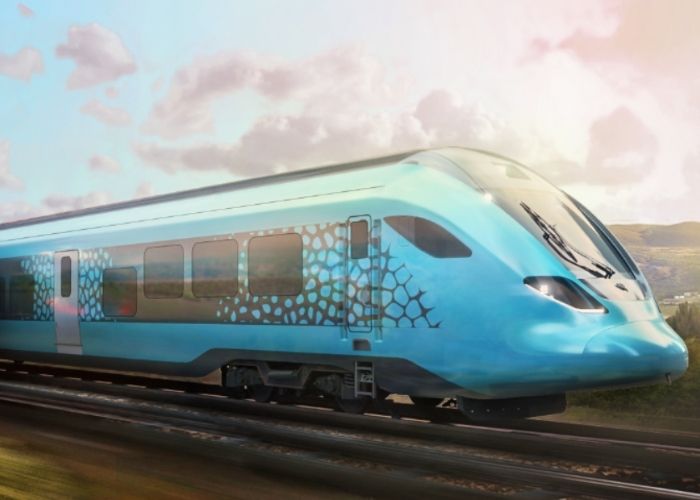Spanish train manufacturer Talgo has the support of Repsol to lead the production in Spain. Talgo is in charge of designing and manufacturing the hydrogen train. Whereas the multinational energy company Repsol is providing the infrastructure and logistics. Moreover, the energy company has a hydrogen plant in Cartagena, Spain, to supply the raw material.
How does the hydrogen train work?
The train is able to transport renewable hydrogen in tanks. Fuel cells convert the hydrogen into electricity and water. Then, the hydrogen is stored in batteries or lithium batteries that power the locomotive. Therefore, in principle, this means of transport can produce the necessary electricity without polluting the environment. This is because it only leaves a trail of steam and water behind.
Hydrogen reduces the ecological footprint
It is important to note that hydrogen is renewable. It is produced without carbon emissions from wind or solar power. And, furthermore, it is a zero-emission alternative and reduces the carbon footprint.
Objectives
The objectives are to improve mobility in Spain and make use of non-electrified railway lines. The Spanish newspaper La Vanguardia reports that ‘experts estimate each kilometre of track to be electrified would cost an average of half a million euros’. However, with the Vittal One, no manpower would be needed to run the train in Spain. The train will run on secondary routes with connections between Spanish cities, refuelling with hydrogen on non-electrified routes.
Talgo conducted a successful trial in October 2021. Emilio García, Talgo’s Director of Innovation, told Crónica Vasca that they had passed the tests in conditions similar to those of real use. El Confidencial reports that ‘the national hydrogen centre has already tested the hydrogen tanks, fuel cells and batteries that will be tested on the train itself this summer’. The Vittal One was originally scheduled to undergo its first preliminary tests in March this year, but these did not take place due to a lack of material supplies and transport problems in recent months.
And this is the ambition of the Spanish government
The Spanish government points out that ‘national targets will be set for the promotion of renewable hydrogen by 2030 and, based on these targets, a vision will be developed for 2050, when Spain will have to become climate neutral and have an electricity system that is 100% renewable’. In eight years Spain wants to have two commercial train lines running on renewable hydrogen.


